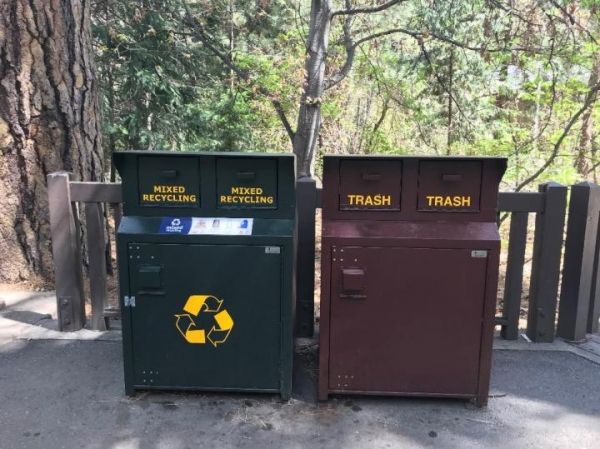When you think of national parks, you might picture the vast plateaus of the Grand Canyon, the intricate wetlands of the Everglades or the inspiring viewscapes of the Grand Tetons. You probably don’t envision 100 million pounds of mashed water bottles, barbecue-smudged paper plates and crumpled coffee cups – but that is the staggering quantity of garbage that is generated in our National Parks each year. And handling that amount of waste is becoming a huge problem.
The quantity of waste produced and how park visitors dispose of it (recycling some materials) is a growing concern for park managers. Handling park waste costs money, involves significant effort and requires human and natural resources that tax parks to the extreme. And with numbers of visitors increasing, managers are looking for strategies to increase diversion of recyclable materials from landfills and reduce the overall amount of waste produced in national parks.
“Many park managers prefer to take a light-handed approach to these kind of challenges – using strategies like better communication rather than enforcement,” said Zach Miller from the Institute of Outdoor Recreation and Tourism at Utah State University, and lead author on recently published research on this topic. “This style of management requires fewer resources, leaves visitors happier and matches the independent park experience people are seeking in these places.”
Read more at S.J. & Jessie E. Quinney College of Natural Resources, Utah State University
Image: The amount of waste produced in national parks in a concern for park and protected area managers. Handling visitor waste costs money, effort, and resources that can tax systems to the extreme. And with number of visitors increasing, mangers are looking for strategies to reduce the quantity. (Credit: Zach Miller/Utah State University)


